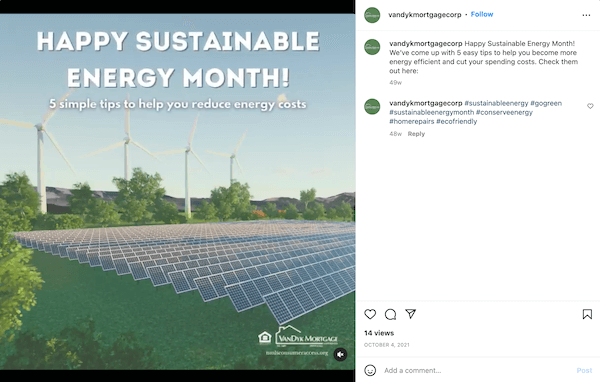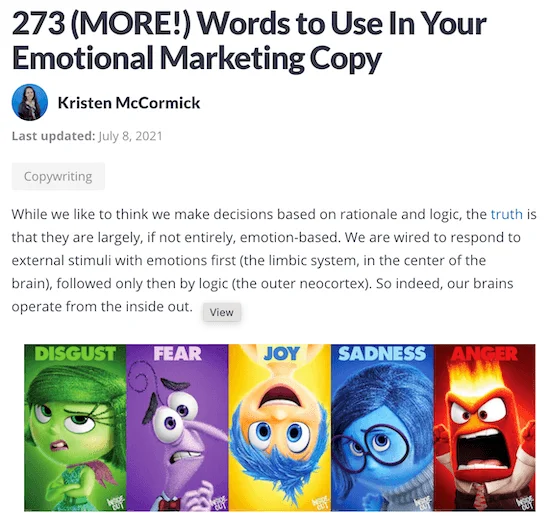PPC
67+ Free & Creative October Marketing Ideas

October:
Costumes. Columbus Day. Candy Corn.
Right?
Wrong.
October is home to Financial Planning Month, LGBTQ History Month, Domestic Violence Month, and more. It’s also when we celebrate Do Something Nice Day, Black Poetry Day, Women in Business, and apparently, handbags. The point is, there are so many opportunities for creative and meaningful marketing that will help you to authenticate your brand voice and stand out.
And we’re covering all of them in this post—creative ideas for blog posts, social media, email, and more, with examples!
Diversity, equity & inclusion in October
Marketing around awareness causes affords your business many opportunities—to support a cause, to help your customers accomplish something fulfilling, and to build up the community around you. Here are the diversity, equity, and inclusion-focused causes in October that you can use to celebrate and foster a sense of belonging for all walks of life. October is the national awareness month for:
- ADD/ADHD
- Anti-bullying
- Bilingual children
- Church safety and security
- Depression education
- Disability employment awareness
- Down syndrome
- Dwarfism
- Dyslexia
- Filipino-American history
- German-American heritage
- Global diversity
- I’m Just Me Because
- Italian-American heritage
- LGBTQ history
- Polish-American heritage
- Women’s small business

And here are some specific national days in October that can help you incorporate DEI in your marketing:
- National Plus Size Appreciation Day (October 6)
- World Mental Health Day (October 10)
- National Coming Out Day (October 11)
- Native American Day (Second Monday in October)
- National Curves Day (Second Wednesday in October)
- National Stop Bullying Day (Second Wednesday in October)
- National Latino AIDS Awareness Day (October 15)
- Black Poetry Day (October 17)
- National LGBT Center Awareness Day (October 19)
October awareness causes
There even more monthly observances in October. You can see the full list at the bottom of this post, but here are some highlights. October is the national awareness month for:
- Adopt a shelter dog
- Animal safety and protection
- Arts and humanities
- Breast cancer
- Crime prevention
- Cyber security
- Dental hygiene
- Domestic violence
- Dropout prevention
- Economic education
- Emotional wellness
- Fairtrade
- Financial planning
- Fire prevention
- Pregnancy and infant loss
- Sustainable energy
October national days
There are dozens of national days for every month of the year, but let’s take a look at some notables:
- Hair Day
- World Smile Day
- Custodial Worker’s Recognition Day
- Name Your Car Day
- Consignment Day
- Child Health Day
- Get Funky Day
- Do Something Nice Day
- Coaches Day
- Touch Tag Day
- Boss’s Day
- Black Poetry Day
- Youth Confidence Day
- Make a Difference Day
And let’s not forget Produce Misting Day…
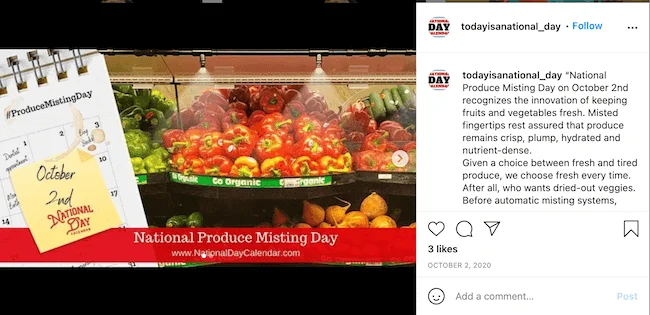
There’s also a full list of October national days at the bottom of this post.
Inclusive October marketing ideas
Alright, now it’s time for the ideas. Let’s start with the ones that embrace DEI. Note that you may also want to check out our roundup of diversity, equity, and inclusion resources.
National Bullying Prevention Month
According to this USA Today article, 49% of children in grades 4-12 report being bullied at least once a month. This October awareness cause is particularly relevant to schools and education-based verticals, but also to businesses whose target market is made up of parents of school-aged children. You can promote this cause through your marketing by:
- Posting stats to social media or providing your followers with anti-bullying resources or organizations they can donate to.
- Donating a portion of your profits this month to an anti-bullying nonprofit.
- Running a contest where kids can submit drawings or stories promoting safety, peace, and acceptance.

National Business Women’s Week
Business Women’s Week is a time to acknowledge and applaud female leaders in business. During this week:
- Share relevant articles, stories, and stats about women in the workforce—like this one we wrote debunking myths about women in business.
- Pull together a panel of female entrepreneurs and record a discussion.

- Interview an influential woman in your company, network, or industry and publish a write-up on your blog.
National Disability Employment Awareness Month
NDEAM happens every October and is aimed at recognizing the important role people with disabilities play in the American workforce and facilitating inclusive employment policies and practices. This year’s theme is “Disability: Part of the Equity Equation.” The NDEAM Social Media Kit is a great resource here, which includes social accounts to follow, images to share, sample posts, and disability employment influencers. Here are some examples:
- Want to hire a diverse, talented workforce? Check out this free online toolkit from @JANatJAN with tools to create a more disability-inclusive and compliant workplace: https://askjan.org/toolkit/ #NDEAM
-
Are you still experiencing effects of COVID-19 that make it difficult to do your job? If so, you may be entitled to workplace accommodations. Learn more. https://www.dol.gov/agencies/odep/topics/coronavirus-covid-19-long-covid
- Lydia X. Z. Brown is an attorney, author & educator whose work focuses on intersectionality & disability justice. Among their many other achievements, they were the lead editor of All the Weight of Our Dreams, an anthology of works by autistic people of color. #NDEAM Spotlight

You can also download the Department of Labor’s free poster or order it by mail.
October marketing ideas: cause-based
Here are some more ways to use October monthly awareness for cause-based marketing.
Domestic Violence Awareness Month
To help raise awareness for domestic violence, you can:
- Host a Facebook campaign where you donate $1 to a local domestic violence shelter for every like your page receives during the month.
- Have your team wear purple on #purplethursday to show your support for the cause.
- Share the national domestic violence hotline number: 1-800-SAFE (7233) as well as the one for your local area.

Breast Cancer Awareness Month
To incorporate breast cancer awareness into your marketing content this month, try out these ideas:
- Have your team wear pink and share your #pinkpose on social media.
- Choose a support charity to donate to, rather than an awareness charity. Support charities that fund direct patient support, such as Chemo Angels and the American Cancer Society.
- Educate your followers with stats and tips on social media.

Energy Awareness Month
If you’re in the industry, write an article sharing industry stats or your own perspective, and promote it on LinkedIn with key takeaways in the post itself. Make sure to include a #sustainableenergy hashtag, as this is a specific topic that will get searched by those who are interested in reading about it.

Another approach would be to share some DIY sustainable energy ideas, whether in the home, office, or classroom.
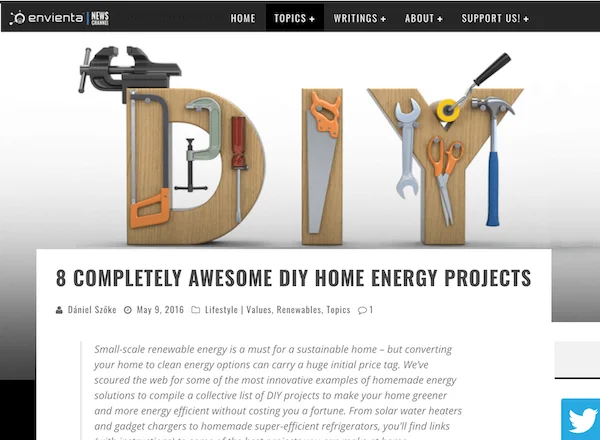
National Customer Service Week
Customer Service Week occurs the first full week of October. This week affords local marketing opportunities both internally and externally:
- Spotlight a different customer service team member each day of this week on social media.
- Offer something a little extra special for your customers, such as a coupon or a branded freebie.
- Give a shoutout on social media to a business that exhibited exemplary customer service for you personally.
- Request feedback about your customer service, whether through a survey, a Facebook poll, a social media conversation, or—wait for it— Instagram Story poll!
- If you’ve won any sort of award (or even if you haven’t), write a post about how you deliver customer service. This is a good way to give tips to other businesses and to attract more customers.
These initiatives will highlight the importance you place on quality customer service, and consumers are attracted to customer-centered businesses.
Emotional Wellness Month
Emotional wellness is a supremely versatile topic, whether you’re a plumber or an interior designer; a SaaS company or in ecommerce. Here are some ideas:
- Share an interesting article from a recent study on mental health.
- Send an email out to your team and have everyone share one thing they do for their own emotional well-being. Then share their tips in a blog post.
- Share some resources on finding therapists or support groups in your area.
- Publish a blog post on an “emotional” topic:
October marketing ideas: national day-based
As with every other month of the year, October is jam-packed with plenty of national [insert just about anything here] days that can take you 90% of the way when coming up with unique marketing ideas. All you have to do is find a way to tie it back to your business. Let’s take a look. (And you can find tons of October social media ideas here, too.)
World Vegetarian Day
World Vegetarian Day occurs every October 1st. This is, of course, a great time for restaurants or shops with a largely vegetarian audience to give themselves a good ol’ pat on the back on social media or their website.

But regardless of industry, you can still get creative with this one:
- For the more carnivorous restaurants, offer discounts on vegetarian dishes.
- Health professionals (ideally who are vegetarians), run an AMA via Facebook Live or Instagram Live on vegetarianism
- In your office (after the pandemic has passed), you could have a vegetarian potluck, with a prize to the best voted dish. You could also simply encourage people to be vegetarian for the day and share their experiences on your social media feed.
- If applicable to your business, publish relevant blog posts containing recipes, information, experiences, resources, and more.
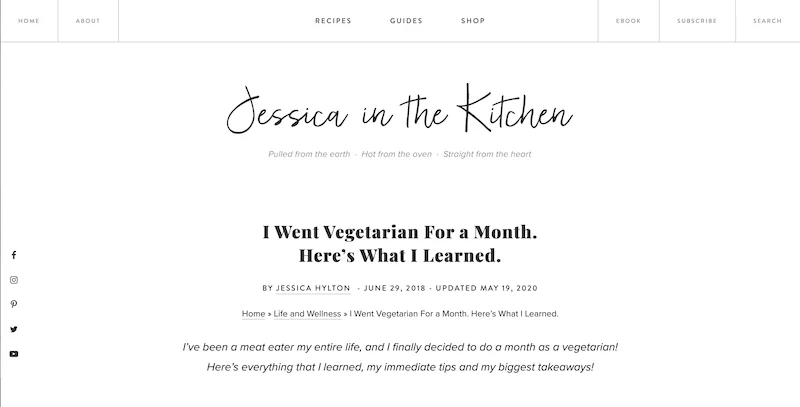
World Smile Day
World Smile Day is celebrated on the first Friday of October every year. Here are some creative marketing ideas you can try out:
- Dentists and orthodontists, of course, can share stats or eye-opening facts that encourage people to book their regular cleaning.
- Any business can promote its best-selling products and services as something to smile about.
- Use the day to announce the return of a seasonal favorite or new offering.
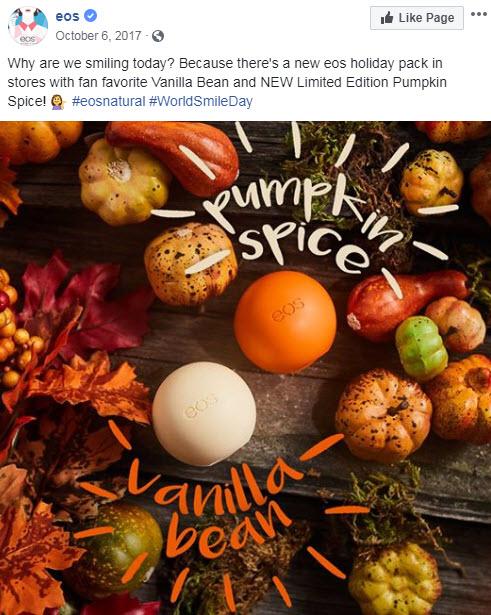
National Cake Decorating Day
National Cake Decorating Day is held every October 10th. Instead of a cake decorating contest, you could:
- Invite your followers to post their cake decorating fails on Instagram or Facebook with a custom hashtag.
- Ask your followers to share their favorite confection creations. Remember, asking your followers to share their own experiences and perspectives on social media strengthens your personal connection with them and helps them to feel valued and heard.

National Savings Day
This October observance day happens on the 12th of the month every year. It’s about having a savings account, so it’s a great topic for financial advisors or accountants. But also, who doesn’t want to save money?
Here are some ways to market your business on this day:
- Write a blog post on how to save money related to your industry.
- Compare the price of your offering with the price of more expensive alternatives and tally up how much money your customers save every year.
- Share helpful information or resources for your audience—local resources if you can find them.
- Run a contest. CapitalOne once ran a cool contest based on the results from this study:

In their #ShareMySave contest, it invited its audience to share images of their most treasured keepsake on Instagram or Twitter and explain why it’s special to them. By including the hashtags #ShareMySave and #Contest, they were entered into a contest to win weekly prizes of $500 and a grand prize of $10,000.
National Boss’s Day
This Facebook- and LinkedIn-friendly holiday occurs every October 16th. You could:
- Surprise your boss with a heartfelt post on what you admire about them, what leaderships skills they exemplify, or lessons they’ve taught you.
- What if you are the boss? Share mistakes you’ve made and lessons you learned from them (good example of the Pratfall Effect)
- Or just choose another boss you know…

Get to Know Your Customers Day
Get to Know Your Customers Day occurs on the third Thursday of the first month of every quarter, and only when the earth is tilted at 23.4 degrees (just kidding on that last part). This is a blatantly awesome marketing day in October, January, April, and July.
- Engage your audience and collect valuable feedback by sharing surveys and short polls.
- Ask about items or services they would love to see you offering. Like with this example…

…or this one:

You could also search your company’s hashtag or location on social media and find some user-generated content to repost.
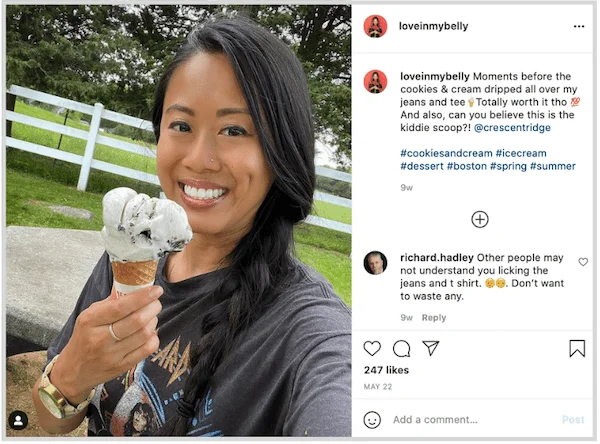
Sweetest Day
According to this source, the National Confectioners’ Association came up with Candy Day back in 1916 as a way to celebrate and support local candy shops and bakeries. During the war in 1917, the message morphed into “Get one for yourself and one for the boys overseas!” Once the war ended, four Michigan confectioners teamed up with the Red Cross to distribute candy to hospitals, orphanages, shelters, and homes across Michigan.
By 1929, it became official: National Sweetest Day occurs on the third Thursday of October and is associated with:
- Charitable giving.
- Acknowledging and appreciating your loved ones.
- Paying it forward.

General October marketing ideas
If you’re too scattered during October (or all the time) and don’t have it in you to coordinate a promotion during a specific week or day, try out any of these general October marketing ideas that give you some more flexibility.
Show off a fall product or service
While September has songs of summer and November has the whispers of winter, October feels like the only true fall month (P.S. why did I get so poetic just now). This month may be the time to really focus on one of your fall-themed products or services.
- Interior designers can feature fall-themed projects in their portfolio.
- Flower shops can display fall-colored bouquets.
- Restaurants can offer a cinnamon-spiced sangria (anything but pumpkin, please).
- Landscapers can promote fall specials on Facebook or their Google Business Profile.

To get even more participants, make it a limited-time offer available only for the month.
Send out an October newsletter
There are plenty of October newsletter ideas here, but for a short list:
- Send out a BOO! Surprise deal with a Halloween promotion.
- In honor of financial planning month, round up any blog posts you’ve published with budget-friendly tips and feature them in your email.
- If you rolled out new customer loyalty programs, ran start-of-school-year specials, or hosted any events during September, share pictures and results in an October email newsletter.
- You can also include a calendar of any additional specials you are running during the month or for November.

You may also be interested in these October email subject lines.
Dabble into the creative arts
The best source for creative marketing content? A creative marketing event.
- Show customers how to make their own fall- or Halloween-inspired craft or recipe.
- Write a blog post with a DIY video showing how to decorate a mantle with fall flowers and miniature pumpkins.
- There are also plenty of opportunities for a pumpkin-carving or pumpkin-painting night.
- If applicable to your audience, share menu ideas for a Halloween party.

I mean, who wouldn’t want to sink their teeth into these…teeth. (Image source)
Participate in a pumpkin patch
Farmers markets or pumpkin patches are abundant during October,
- Do a little local research to see if there are any annual events where you can set up a stand, offer a sponsorship, or volunteer at. Being involved in local events and causes is a win-win, as it markets your business for you while facilitating community building.
- You could also donate free products or classes as a part of any raffles the event is running.

Open your doors
If you’re located on a downtown Main Street of sorts o if you’re in a part of the country where the weather is beautiful at this time, get some fresh air into your building. This makes your business more inviting to passersby. A chalkboard outside with your specials, an inspiring quote, or a fun fact is an added bonus.
Halloween marketing ideas
What kind of October marketing ideas post would this be if I didn’t mention Halloween? Many of these Halloween marketing ideas are traditional, tried, and true, but with a little brainstorming and brand voice, you can always add that creative twist to catch your customers’ eyes.
Embrace the Halloween garb
Get your business in the spirit of the season by decorating your office, store, or even your website and social media pages with all the good stuff: mums, pumpkins, gourds, hay bales, burlap, skeletons, spiderwebs, ghosts, and the list goes on. This is more of a cliche marketing idea, but that doesn’t make it any less effective.

When you’re proactive with your business’s appearance, this signals to customers that you care about the impression you leave on them, and reminds them that yours is not just a business, but a passion. You might even get really crazy and carve your company logo into a jack-o-lantern to place in your storefront with a[n electric] candle at night.
Host a candy counting contest
Run a guessing contest to get customer email addresses in store. Put a giant canister of whatever sugary Octobery sweets you choose, and have customers provide their email addresses with their estimate, or write it on the back of their business card. This can be done virtually, too. The winner gets a prize (perhaps all of the candy) ((unless you’re a dentist)) or coupon or discount off their next purchase.
Dress up for Halloween
I cringe slightly upon giving this suggestion, but I think this could be a great idea for businesses that cater to children. Plus, you don’t have to be in a full-blown clown suit. Dentists and hair dressers can make otherwise scary appointments more fun with a friendly scarecrow, farmer, or cowboy costume. Clowns and vampires might scare the youngsters, so stick with safer or more neutral options.
Host a Halloween costume contest
This one is also pretty cliche but it’s never not a fun time. Have a costume contest for your students, customers, staff, or even customers’ pets. Share the pictures on your blog, Facebook, Instagram, or Twitter and ask customers to vote for the winners. The winner gets a prize and is featured in next month’s newsletter.

Participate in a Halloween event
Participating in any Halloween events going on around you—zombie 5k’s, trick-or-trunk nights, kids trick-or-treat afternoon in the office, or any building-wide Halloween activities if you work in a shared space. It’s tough to stop when you’re running a business, but more often than not, the break away from your tasks and the added laughter can actually recharge you and lead you to be more productive in the long run. Plus, the more you can interact with the people in your community, the more you can learn about how to serve them and really make a name for yourself.
Easy, effective, and inexpensive October marketing
Running an October-themed marketing campaign is a great way to authenticate your brand, interact more with your local community, and try out new tools and platforms. While they’re fun and creative, they’re also effective and can help you to increase your exposure, attract more customers, and build up your reputation. Try out one of these easy October marketing ideas and get yourself armed and ready for your holiday campaigns.
Interested in more marketing ideas for every month of the year? We can help with that.
And for planning, check out this marketing calendar template from our friends at LOCALiQ.


